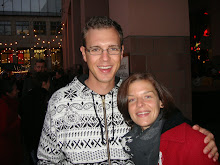Last night I had one of the enjoyable training sessions for months. I’ve been going through a rough patch lately and it has really affected my training, but last night I was really motivated and in good spirits, which really made a difference.
One of the main lessons from this session was how we interact with an opponent, which was demonstrated through an application of Steps 17 and 18 of Taekwondo pattern Dan-gun (my master actually describes this in his blog much better than I ever could). Anyway, as we were performing the application our instructor stepped in and demonstrated it again to us, focusing our attention on the facial expression of his opponent. And indeed there was a sincere look of fear/surprise, which none of us had managed to invoke on our respective opponents. Why was this so? As he demonstrated the application again on each one of us, we realised that his hands were much closer to the opponents face right after the block than when we had tried it. This created a false impression of proximity, which in a situation like this was very intimidating, which in a real life threat situation can win you vital seconds.
So what’s the lesson? Stay in your opponents face!
Teen Girl Defends Against Attacker
5 weeks ago
